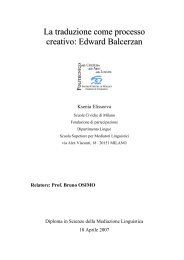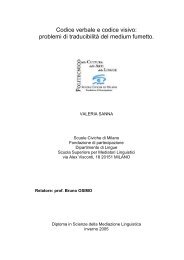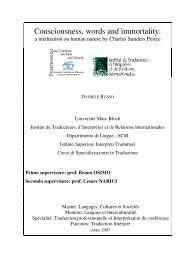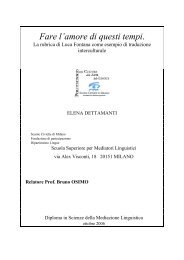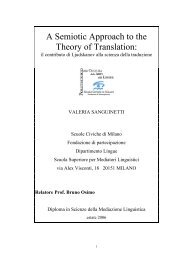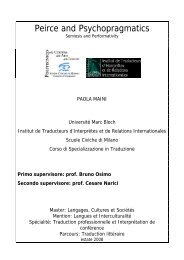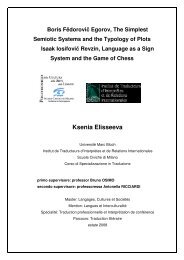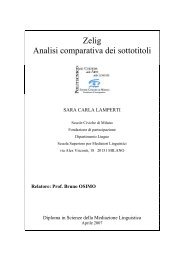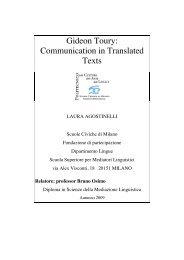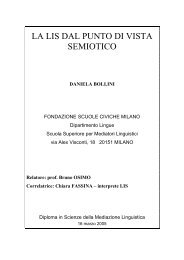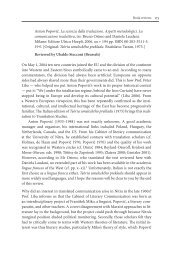Relatore: Professor Bruno OSIMO - Bruno Osimo, traduzioni ...
Relatore: Professor Bruno OSIMO - Bruno Osimo, traduzioni ...
Relatore: Professor Bruno OSIMO - Bruno Osimo, traduzioni ...
Create successful ePaper yourself
Turn your PDF publications into a flip-book with our unique Google optimized e-Paper software.
of his conscious effort is aimed at solving the problem, and there is no room<br />
left for reflecting on what he is doing. For this reason, there is no delay and<br />
the data gathered are direct; the subject does not interpret his thoughts nor is<br />
he required to bring them into a predefined form, but he renders them just as<br />
they come to mind. However, think aloud protocols are not necessarily<br />
complete because a subject may verbalize only part of his thoughts (Someren,<br />
Barnard and Sandberg 1994).<br />
With tasks in which thinking aloud is not possible (e.g. simultaneous<br />
interpreting), data can be collected through retrospective verbal reports.<br />
“They ought to be elicited immediately after the task performance<br />
(immediate retrospection) and with as little interference from the<br />
experimenter as possible” (Ericsson and Simon 1984: 19).<br />
2. 1. 5. DIALOGUE PROTOCOLS<br />
Although monologue protocols are still predominantly the main tool for<br />
collecting data, the artificiality that still remains has led some researchers<br />
(House 1988; Hönig 1990 and 1991; Kussmaul 1989a, 1989b, 1993 and 1994;<br />
Schmid 1994) to get subjects to talk to each other. In a small-scale experiment,<br />
House compared monologue and dialogue protocols applied to translation<br />
tasks. The findings show that in monologue protocols processes as selecting<br />
target language items, weighing alternatives and choosing a particular<br />
translation equivalent remained unverbalized (House 1988). In contrast, when<br />
people collaborate they will sometimes have differing opinions. Thus they are<br />
forced to give arguments, to clarify steps of their thinking processes. In fact,<br />
when talking in pairs, subjects negotiated solutions to translation problems<br />
and each individual’s thoughts appeared to have been consistently shaped due<br />
to the necessity of having to verbalize them. House concluded that the<br />
dialogue situation provided richer data than monologue protocols (House<br />
1988). “Later TAP experiments have shown, however, that the richness of data<br />
depends on the type of subjects and the translation brief, and, above all, on the<br />
priorities of the researcher” (Kussmaul and Tirkkonen-Condit: 180).<br />
11



